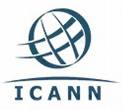
Forty years after the first successful connection was made on the predecessor to the Internet, the U.S. has given up its fading claims to govern the network.
A fight over governance which erupted in 1998 has ended with a whimper.
In this case, I’m not talking about the regulation of human activity that takes place using the Internet, but of the internal working of the network itself.
As reported by the Advisory Committee of the Congressional Internet Caucus, the U.S. government’s agreement with ICANN was allowed to expire on September 29th. (The Department of Commerce has a separate agreement with ICANN, which was also significantly modified.)
ICANN is a non-profit corporation formed in 1998 to manage two key aspects of network governance: the assignment of domain names and website suffixes and of IP addresses for computers connected to the Internet. There are now over 110,000,000 registered domains.
Hard as it is to believe, before 1998 the management of names and addresses was largely left to the efforts of Jon Postel, a computer science professor at the University of Southern California. As the Internet shifted dramatically from an academic and government network to a consumer and business network, it became clear that some more formal mechanism of governance was required.
But by then the Internet had become a global phenomenon. The U.S. government was adamant that it retain some measure of control over its invention; the rest of the world argued that resting authority for a global infrastructure with one national government would cripple it, or worse. Hearings were held, speeches were made, the U.N. was called in (literally).
ICANN was the compromise, and it was an ugly compromise at that. ICANN has run through several executive directors and political battles. Just explaining the selection of members of its Board of Directors, as David Post demonstrates in Figure 10.3 of his book, “In Search of Jefferson’s Moose: Notes on the State of Cyberspace,” requires a flowchart with nearly fifty boxes.
It has also been the subject of regular criticism, in particular for the ways in which it subcontracts the registration of domain names, its resistance to creating new “dot” suffixes, and its evolving and weird process for resolving disputes over “ownership” of domains, typically involving a claim of trademark infringement or unfair competition. Former board member Karl Auerbach, quoted in Information Week, put it this way:
At the end of the day it comes down to this: ICANN remains a body that stands astride the Internet’s domain name system, not as a colossus but more as a Jabba the Hutt. ICANN is a trade guild in which member vendors meet, set prices, define products, agree to terms of sales, and allow only chosen new vendors to enter the guild and sell products.
Still, through dot.com boom and bust, Web 2.0 and social media, the Internet has continued to grow, operate, and reinvent itself as new technologies arrive on the scene.
And what started as a U.S. government project is now clearly a worldwide convenience. According to Christopher Rhoads in The Wall Street Journal, “today just 15% of the world’s estimated 1.7 billion Internet users reside in North America.”
Which is perhaps why the end of federal government oversight of ICANN received so little attention in 2009.
But in 1998, you would have thought the future of civilization depended on keeping the Internet an American property.

